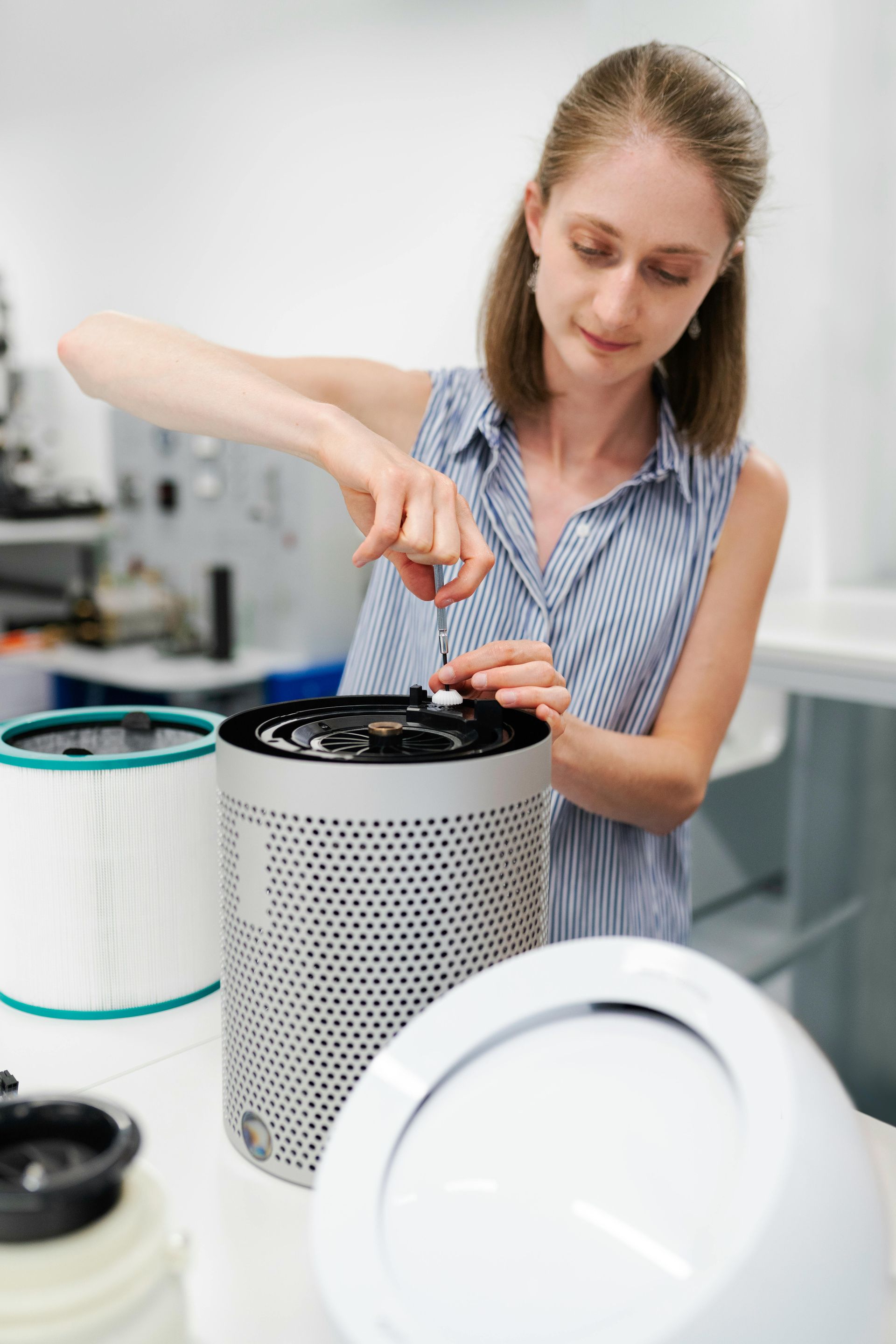Testing Indoor Air Quality for Asthma and Allergies
According to the Asthma and Allergy Foundation of America (AAFA), "Allergy and asthma control begins at home." But reducing potential triggers is far from straightforward.
From dust mites in bedding and pet fur in carpets to mold in bathrooms and utility rooms, exposure to these and other airborne particles can lead to an allergic reaction. Even the use of certain cleaning products, aerosols, and air fresheners can contribute to the level of contaminants, which is why the American Lung Association warns against them. And let's not forget that open windows and doors can lead to an inevitable low-level transition of outdoor particles into the home. Given that we spend around 90% of our time indoors, monitoring indoor air quality is vital.
Volatile organic compounds (VOCs), for example, are a combination of gases and odors emitted from many different toxins and chemicals found in everyday products. Although some are not considered harmful, others may cause respiratory irritation or even have a detrimental impact on health over time.
Humid conditions are also known to be troublesome for asthma sufferers, but it's important to realize that it's what comes with them that often creates the problem. For example, if the humidity in your house is higher than 50%, dust mites can multiply. The elevated moisture in the air can also make it feel "heavier" and make it harder to breathe, raising body temperature and causing dehydration, which together can trigger asthma symptoms. In fact, people are 40% more likely to have asthma when living in damp or moldy homes, according to a recent study.
Air Quality
Breathing healthy air is vital for your health and well-being. Learn how to monitor the contaminants in your home and reduce your risk of exposure.
Radon
Radon is an invisible gas formed in the Earth's crust. It surrounds every one of us as part of the air we breathe. High levels over long periods of time are the issue. By monitoring radon long term, you can be alerted when levels are high and make small changes to improve the air you breathe.
Particulate Matter
Particulate matter, or PM, isn't just one contaminant or pollutant. It's a range of particles of dust, dirt, and liquids that become suspended in the air. Some of these are large enough to see, like smoke, smog, or soot, but the most harmful are smaller, invisible particles. These can get into your lungs and even your bloodstream. The healthier the air, the fewer PMs.
Carbon Dioxide
Carbon dioxide, or CO2, is a greenhouse gas that is natural and harmless in small quantities, but as levels rise, it can affect productivity and sleep. Most commonly produced indoors by the air we, exhale, CO2 levels concentrate indoors with less ventilation. High levels are directly correlated to low productivity and high sick leave, making this a crucial concern in offices, schools and home environments. Studies show that people have a much harder time learning, performing simple and complex tasks, and making decisions, as CO2 levels rise.
Mold
Mold is a microscopic fungus that helps nature decompose dead organic material. Both mold and mildew are different types of fungus. Mold spores are like seeds, but invisible to the naked eye, that float through the air and deposit on surfaces. When the temperature, moisture, and available nutrient conditions are correct, the pores can form into new visible mold colonies where they are deposited.
Mold needs moisture to grow, so the humidity levels in your home are a factor to consider. Excess humidity can lead to dampness and mold. Under the right conditions, mold can grow anywhere in the home and will destroy the material on which it grows. Mold will grow more rapidly on some material types than others, in particular wood, textiles and cellulose-based materials like cardboard and paper.
21% of the 21.8 million cases of asthma annually are attributable to residential dampness and mold. The humid conditions provide an excellent home for bacteria, as well as mold growth. The excess moisture in buildings can be caused by leaks, rain seeping in through windows and basements, or even rising damp from the ground floors.
Humidity
Humidity is a measure of the amount of water vapor in the air. Relative humidity measures the amount of water in the air in relation to the maximum amount of water vapor (moisture). The higher the temperature, the more water vapor the air can hold. Relative humidity is what your morning weather reporter would refer to.
Humidity levels above the recommended 50% are when the air will start to feel dense and damp.
More problems can develop as the levels rise.
Did you know that dust mites could not survive without humidity from the air? Dust mites like
moderate temperatures and high humidity as they absorb water from it, so areas with high
humidity levels are great places for them to live. These microscopic creatures can worsen
allergies and asthma, so maintaining healthy humidity levels is key to minimizing them and their
effects.
Total Volatile Organic Compounds
Total volatile organic compounds, or TVOCs, are a combination of gases and odors emitted from many different toxins and chemicals found in everyday products. VOCs can cause serious health effects in both the short and long term. Health effects vary from minor eye, nose and throat irritations all the way to liver and kidney damage, depending on the level of exposure.
Short term effects include:
- Headache
- Nose, throat, eye inflammation
- Coughing, painful breathing
- Pneumonia, bronchitis
- Skin irritation
Long term effects include:
- Affects the central nervous system (headache, anxiety)
- Cardiovascular diseases
- Respiratory diseases (asthma, cancer)
- Impacts on liver, spleen, blood
- Impact on the reproductive system
Share this blog!



